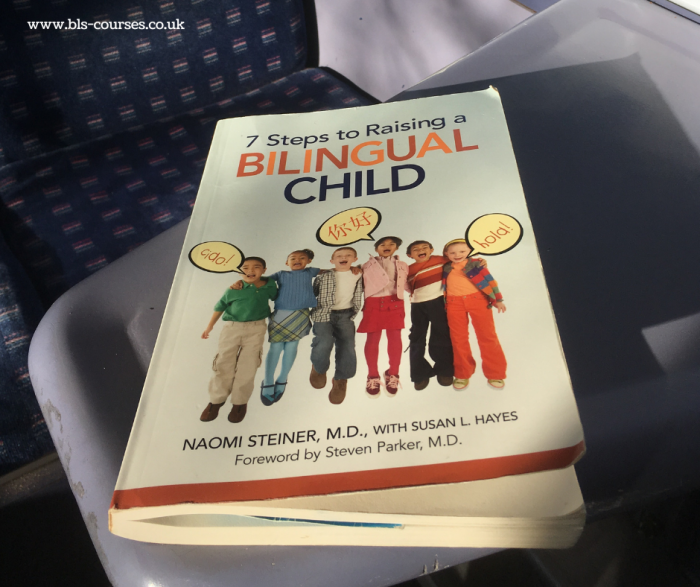“When it comes to bilingualism, something is always better than nothing.” (p. 127)
I like reading books on bilingualism; they provide me with inspiration and motivation when it comes to raising my own children bilingually.
This book reminded me that bilingualism doesn’t just happen, it requires parents and family to take certain steps to regularly enrich their children who have access to two languages. It’s a journey that takes time and effort, and in return our children can speak and understand two languages.
7 Steps to Raising a Bilingual Child by Naomi Steiner is a practical guide to a family’s bilingualism and how to navigate through the journey of raising a child bilingually. It’s divided into 7 steps: building the foundation, defining goals, becoming a bilingual coach, creating a bilingual action plan, leaping over predictable obstacles, reading and writing in two languages, and adapting to school.
The book contains many interesting cases, common questions and advice based on experience. It also provides practical tools on how to set bilingual goals, e.g. via provided worksheets. Once we’ve started implementing our bilingual goals into everyday life, the author reminds us that learning or activities in the second language should be ‘enjoyable, interesting and relevant’ (p. 56). Then, we read more about the tools we can use to help us raise children bilingually, e.g. podcasts, films, books and songs (I would add card / board games and audiobooks).
More language support can come from the local community (neighbours and friends), extended family (their visits and our travels to them), weekend supplementary schools, and summer language camps. All those tools and support can be part of our weekly action plan where we can realistically see how much second language input can be provided throughout the week.
Once we’ve decided or started our bilingual journey, we may experience some difficulties or obstacles. The book answers some of those difficult questions which might be very helpful, especially for those who experience them, or who are at the beginning of the bilingual journey. The author emphasises the importance of reading and writing. I couldn’t agree more: we love reading together and already have a long list of our favourite books (in two languages). Also, hand-writing is a wonderful skill; in our case, we are currently experimenting with writing postcards and letters to family and friends.
There is also a section about US schools which is less relevant to me. I’d be especially interested in reading more about bilingual home-schooling families.
I think the book can help people get organised around bilingualism, to set goals and have an action plan. It’s a practical guide to children’s bilingualism, which might be a useful publication for those starting their bilingual journey, or for those looking for some inspiration and motivation.
Have you read any interesting publications on bilingualism? Please let me know in the comments below.
Kinga

